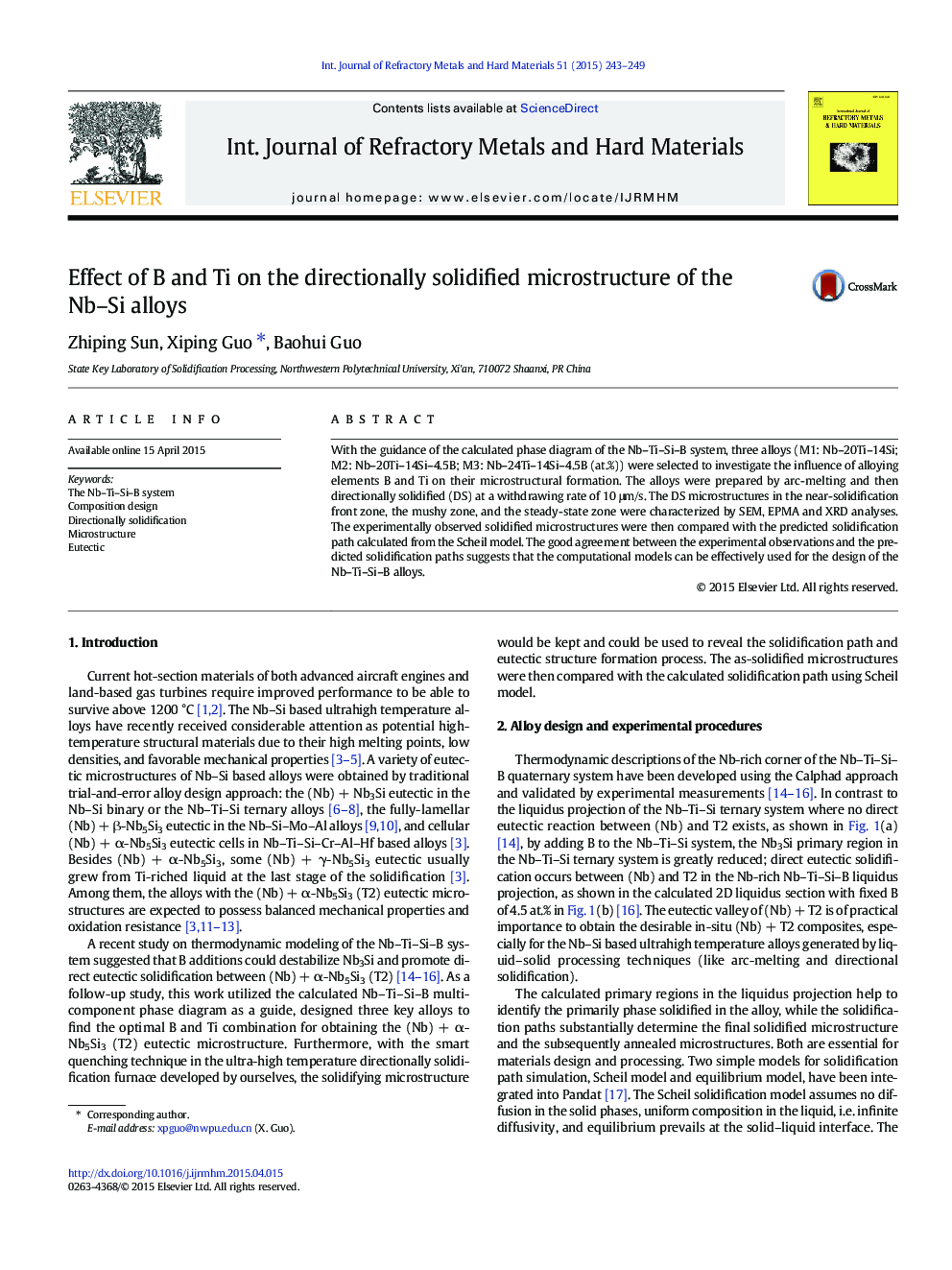| Article ID | Journal | Published Year | Pages | File Type |
|---|---|---|---|---|
| 1602962 | International Journal of Refractory Metals and Hard Materials | 2015 | 7 Pages |
•Three Nb–Ti–Si–B alloys were arc-melted and integrally directionally solidified.•Solidifying microstructures were quenched to reveal the eutectic formation process.•4.5% B can suppress (Nb) + Nb3Si eutectic, and promote desirable (Nb) + T2 eutectic.•T2 was the first phase to nucleate in the quadrangle (Nb) + T2 eutectic cell.
With the guidance of the calculated phase diagram of the Nb–Ti–Si–B system, three alloys (M1: Nb–20Ti–14Si; M2: Nb–20Ti–14Si–4.5B; M3: Nb–24Ti–14Si–4.5B (at.%)) were selected to investigate the influence of alloying elements B and Ti on their microstructural formation. The alloys were prepared by arc-melting and then directionally solidified (DS) at a withdrawing rate of 10 μm/s. The DS microstructures in the near-solidification front zone, the mushy zone, and the steady-state zone were characterized by SEM, EPMA and XRD analyses. The experimentally observed solidified microstructures were then compared with the predicted solidification path calculated from the Scheil model. The good agreement between the experimental observations and the predicted solidification paths suggests that the computational models can be effectively used for the design of the Nb–Ti–Si–B alloys.
